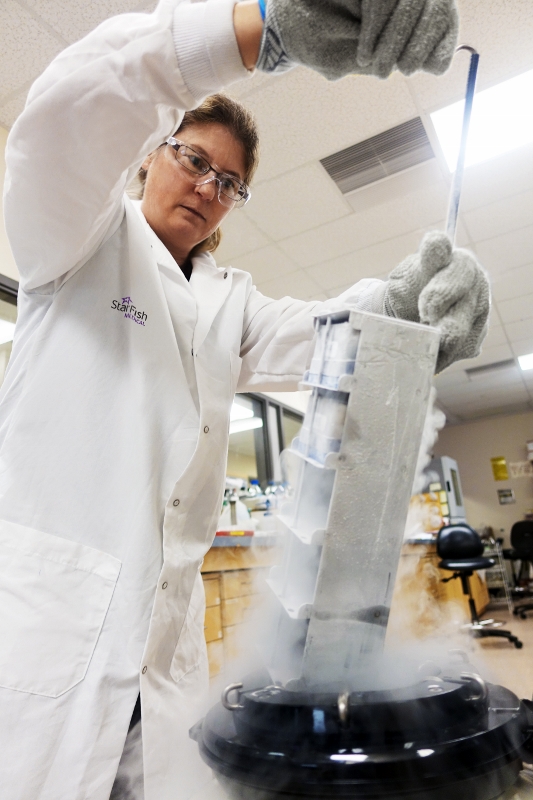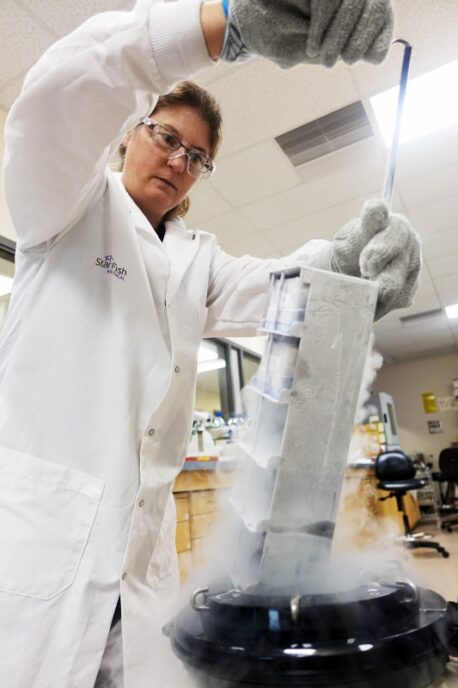Designing equipment (medical or otherwise) is a complicated process. This complexity is increased when the equipment of choice must either come in contact with biological material, or function within a biological environment. In order for a device to operate as intended, it must be able to withstand the unique conditions that biological fluids impose. Depending on the site of use, the constructed parts must be able to withstand extended exposure to high or low salt concentrations, acidic or basic conditions, a range of degradative enzymes and/or microbial interactions.
Ultimately, a product will need to be tested in its target environment. However, for early stage design choices, the high costs of animal trials, and exposure risks to infectious biological can be avoided through the use of Simulated Fluids (SFs). Simulated fluids comprise a surrogate test environment of artificial liquids that mimic different biological characteristics. They are inexpensive, well-defined and reproducible reagents in which a device (or its constituents) can be tested and optimized.

Simulated fluids come in many forms. The key to knowing what kind of fluid to use is in understanding the factors that you are trying to simulate. When dealing with biological systems, these factors may include (but not be limited to) pH, ion concentration, viscosity, temperature, density, biological activity, enzyme activity, electrical conductivity, or a combination of the above.
Because we have complete control over the composition of SFs, we can make hypotheses around the function of a device in a defined set of parameters. Testing can be repeated using batches of fluids of identical characteristics, thus giving statistical power to the experiment. A range of materials may be subjected to a battery of test fluids in order to down-select inferior candidates. Design flaws in, for example, the choice of construction material, overall size and shape, and functionality can be addressed early on. Pilot experiments can be performed on integrated parts, and tweaks implemented, often with a turnaround time of hours – to – days (instead of weeks – to – months). The goal is to mitigate risks and avoid costly downstream surprises.
The following example is taken from Artificial Urine for Laboratory Testing (from The American Biology Teacher, 52(3), 171. Published by The National Association of Biology Teachers). In order to teach students how to perform and interpret laboratory tests on human urine using standard equipment, the procedure provides different SF recipes. The base recipe is comprised of a mixture salts and proteins at the correct pH and density to mimic Normal Human Urine. In order to study 8 common disease states, 8 different variations of the Normal Urine recipe can be made. By testing this panel of SFs with conventional medical technologies, students are able to make their “diagnoses” without risking unnecessary exposure to infectious diseases. The SFs are cheap, easy to make, predictable, and allow for reproducible test results over numerous students.
When it comes to choosing your own specific SF(s), start simple and work upward. The easier the question that you ask, the more concise your answer will be. For instance, if you are worried about degradation of a component in an acidic environment, test this component in an artificial liquid with the most extreme pH expected to be encountered in the target environment. Test the component for the maximum time period and temperature expected to be encountered. Most importantly, don’t forget your controls. Compare component exposure in a neutral liquid for the same amount of time and temperature in order to capture “baseline” integrity data.
Don’t try to address too many factors at once when formulating your SF. This will likely require the use of different liquids to test for different parameters. The best fluid to test pH may not be the best fluid to test viscosity or enzyme degradation. Doing some research will enlighten you to what other researchers are using to answer the same questions.
When implementing SFs, change only one variable at a time during the testing/optimizing process. The temptation is to save time (and money) by eliminating steps in the scientific process. However, by changing multiple test parameters simultaneously without fully understanding how they influence each other, bad or incomplete conclusions can be made. For example, pH, temperature and solubility are often interrelated with each other and how they impact a construction material. By changing both your pH and temperature of your SF at the same time, you will be unable to determine which parameter is having what effect on the final integrity of your test article. You lose control over your test system, which is the key strength of using SFs.
In the end, don’t forget that your simulated fluid is still simulated. Whatever lessons you have learned subjecting your test devices to their various artificial environments, no fluid mimics a biological entity completely. Ultimately, the device must be tested in the organism and/or organ of interest. Biology has its way of throwing curve balls, and sometimes defies our best attempts at replicating it. Eventually, animal and/or clinical trials will need to be performed prior to FDA approval. The results of these trials can make or break a product’s success. The more answers that one has going into these trials, the better the chances of a successful outcome.
Sue Bantroch is a Biomedical Engineering Technician at StarFish Medical. This is her first blog for StarFish. Sue works on a variety of biotech medical projects splitting her time fluidly between our main facility and our BSL2 facilities at the University of Victoria.
Images: StarFish Medical

